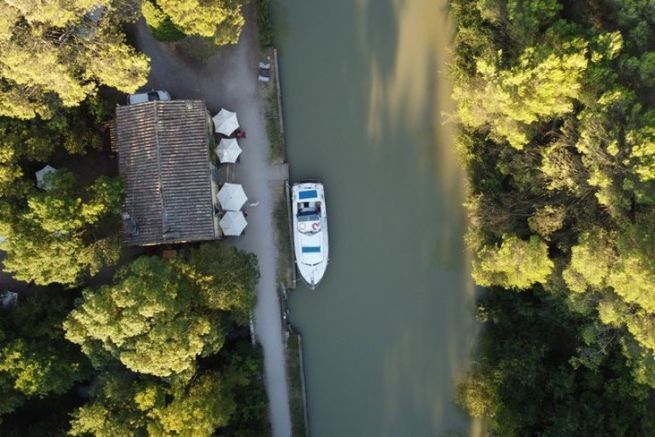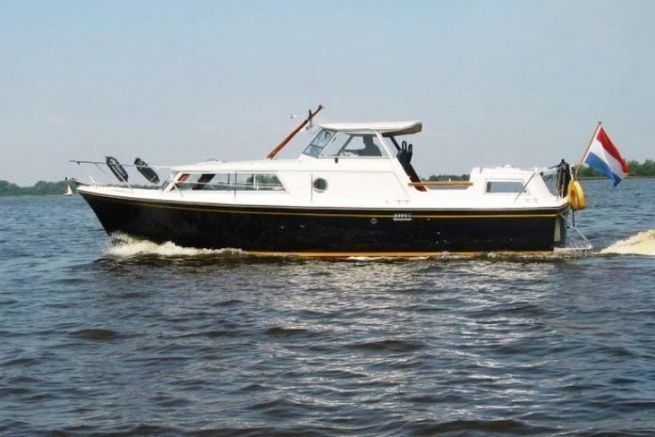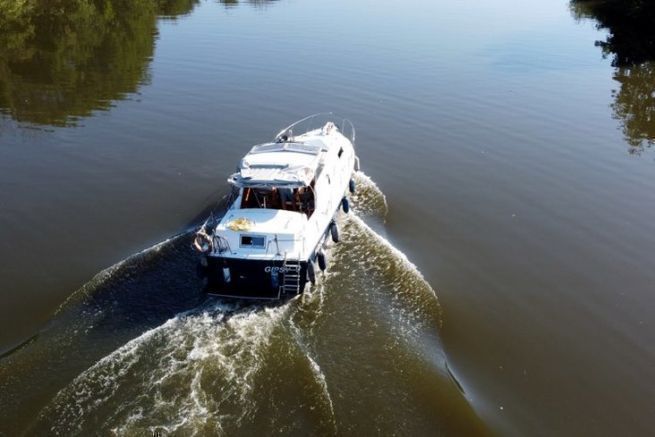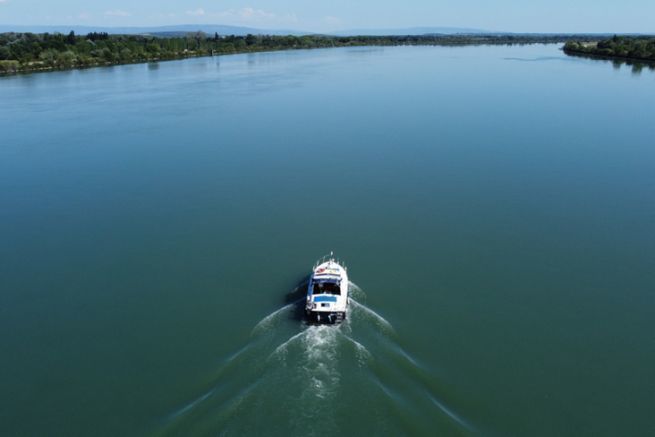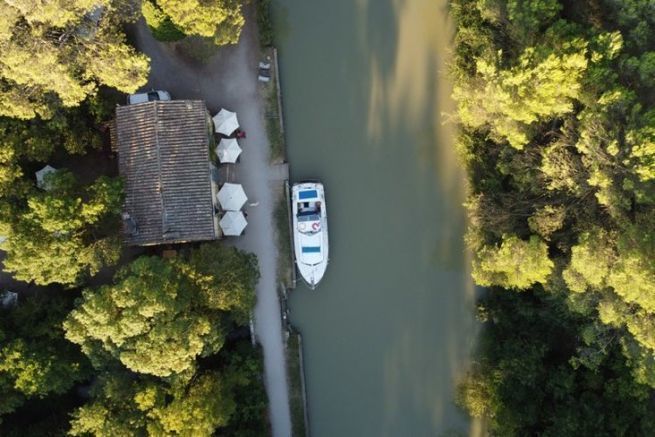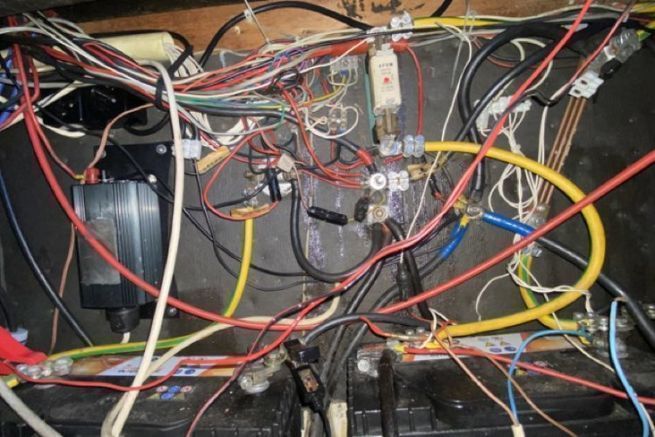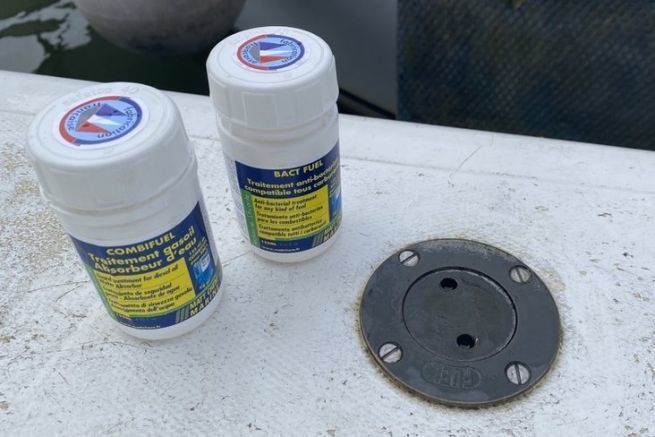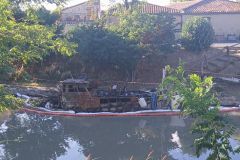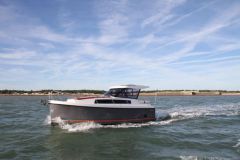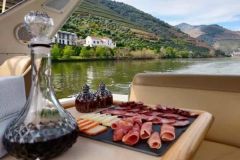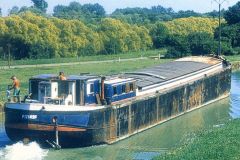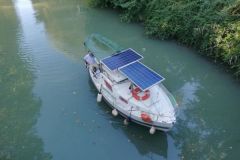It is finally on August 22, a Sunday morning that we plan to reach the sea at Grau-du-Roi. From this fisherman's port, the access to the Mediterranean Sea is done at the opening hours of the swing bridge: 4 times a day. As the weather forecast is for a deterioration in the afternoon, we want to use this morning to enjoy this first navigation in salt water.
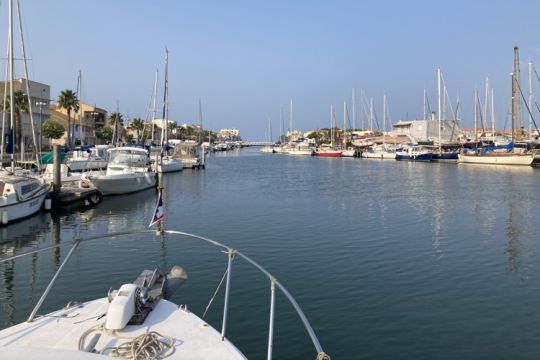
At 7:00 am we set off to wait in front of the bridge and take advantage of the first opening. But again the mechanics called us to order: no starter on the port engine... After 2 hours of not very accessible mechanics, the culprit was back in service. And it's finally at 9:30 am that we leave, the deck opening at 10:15 am. This time, it feels like the sea!
A navigation at sea full of good surprises
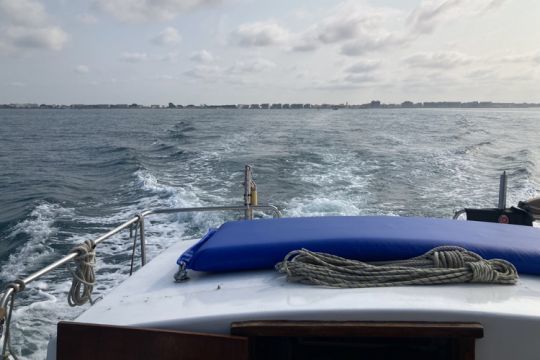
From Le Grau-du-Roi we originally aimed at the port of Sète. This is the closest point of entry to the Canal du Midi. But Gipsy, so happy to be back in the salty element, pushes us to continue. It is finally at Grau d'Agde that we choose to take the Hérault which joins the Canal at Agde.
The good surprise comes from the boat's behavior at sea. Indeed, with the 2 engines launched at 1500 rpm, it sails quietly at 8.3 N (we expected a navigation around 7 N). Tests on a single engine also at 1500 rpm give a speed of 6.7 N. Finally, it took us 5 hours to complete the 35 miles of the trip, averaging 7 knots.
With a headwind and a small chop, the boat has a very healthy behavior and apart from salting the deck and the windows of the saloon, it makes you want to head for the open sea. Corsica or the Balearics seem to be within reach... but that will be for another cruise.
Discovery of canal navigation
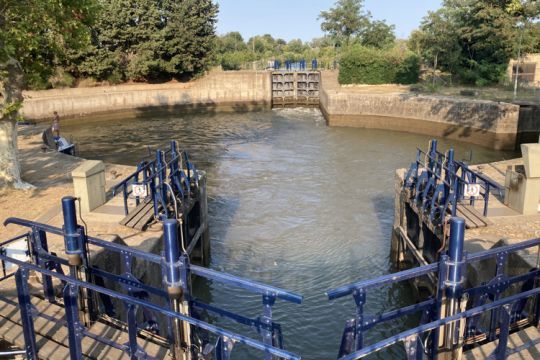
It is by the round lock of Agde that we reach the Canal du Midi. A very particular lock since it has three gates. Starting from the sea (the lowest point) to get back to Toulouse, we will go up all the locks before reaching the high point (known as the water divide) before going back down to the Atlantic. This means that we are in front of empty locks that fill up when we are inside to make us go up.
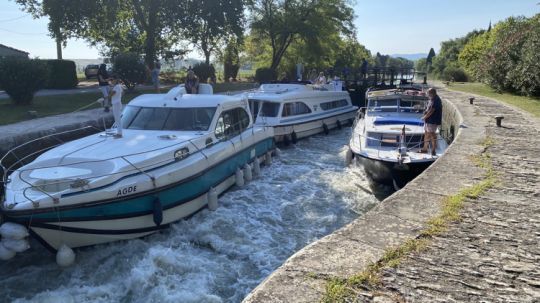
This implies disembarking a crew member before the lock so that he can take our moorings once the boat is inside. Indeed, the difference in level of each lock (between 2 and 3 m) does not facilitate the maneuver from the deck of your boat.
This being said, the locks of the Canal du Midi, all electrified and sometimes even automated, are for each an opportunity to discover a new landscape. If the lock keepers (VNF staff) have always been courteous and accommodating, the large number of locks ends up being a bit tiring. Indeed, we crossed nearly 60 locks to reach Toulouse in 6 days of navigation (about 200 km of navigation).
The price of success
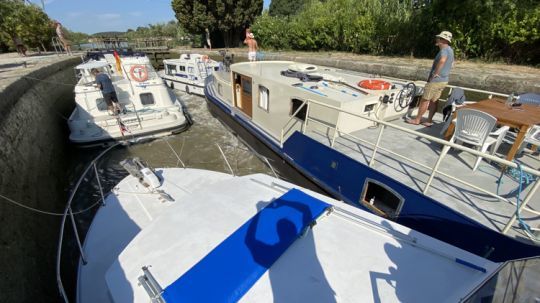
When we attacked the Canal du Midi last week of August, we hoped to find the way free, at least not too crowded. But obviously, the tenants who love river cruises didn't hear it that way and we often shared the lock chamber with 2, 3 or even 4 boats. When we didn't have to wait in line for the opportunity to pass. At the peak of the traffic, we found ourselves with 10 boats waiting in front of the lock chamber of the double lock of Péchlaurier..
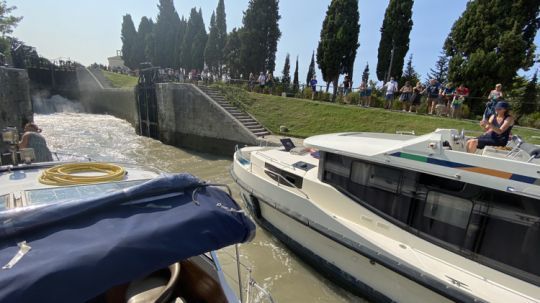
In the same way, the succession of locks, sometimes give us the impression of being the stars of the Cannes Film Festival. The famous scale of 7 locks of Fonseranes (Béziers) is a high tourist place visited and we crossed it under the crackling of the cameras. The same goes for the approach to Toulouse where it is easy to understand that the canal is a pleasant area for Sunday strollers who come there to get some fresh air, run their children or walk their dog..
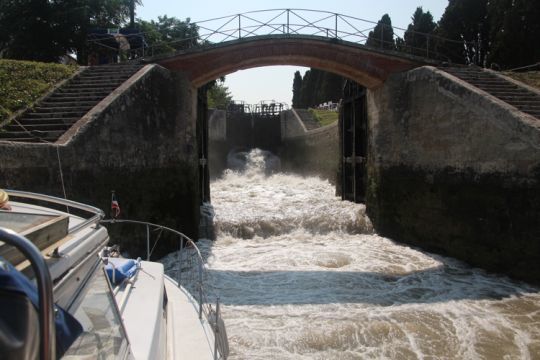
Landscapes that are worth a visit
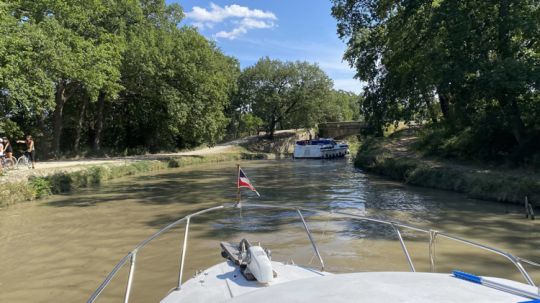
It must be said that the landscapes of the Canal du Midi are sometimes magnificent. Unfortunately, the disease that strikes the plane trees (the colored canker) has forced many felling (26,000 trees felled and burned since 2006). Fortunately, a plan to replant them is underway, but it will be many years before the newcomers reach heights of over 20 m like the plane trees that are still standing today.
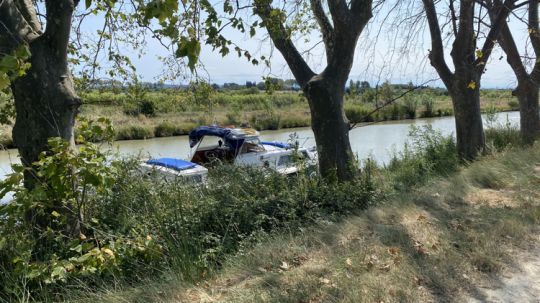
It is the southernmost part that is the most affected by the disease with long stretches without any plane trees. On the approach to Toulouse, the Canal is still unscathed and still presents the landscapes that have forged the image of the Canal du Midi.
An arrival without fanfare
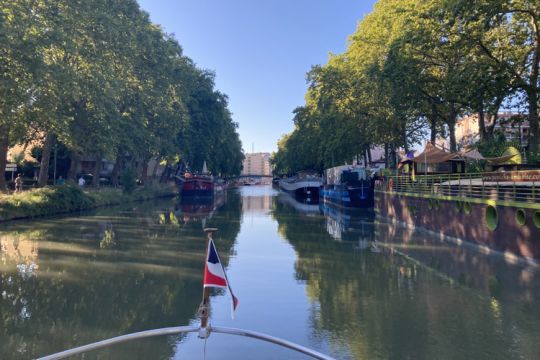
We reached Port Saint-Sauveur in the center of Toulouse on Sunday, August 29th around 7pm. Just in time to be at work on Monday morning! Our log records the distance of 927 km from the port of Savoyeux. A nice trip through France in 18 days. We did not take much time at the stopovers and made this trip in convoying mode.
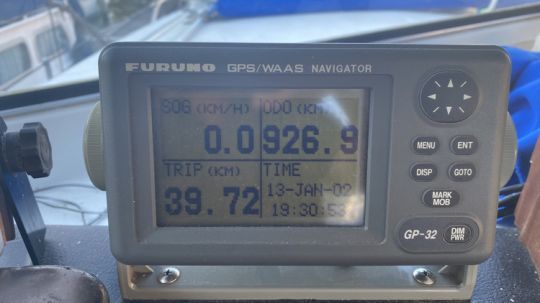
Our Amerglass, which has been sailing for almost 50 years, had not been checked before departure, which is probably why we had some minor mechanical problems. But the fact that we have done all this without ever being blocked shows the feasibility of our future project.
All that remains now is to start the boat from scratch, to refurbish it, to make it more reliable in order to prepare it for the great voyage around Europe.
To be continued..

 /
/ 